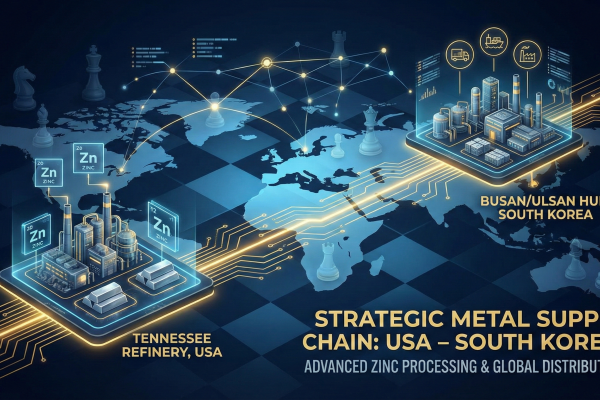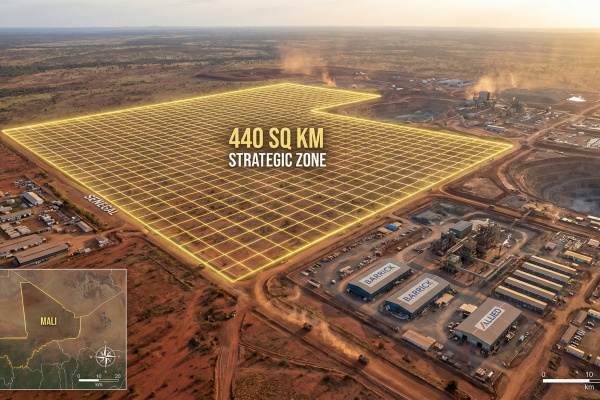June 24th, 2025 | 07:05 CEST
Western countries seek rare earth escape route: BYD, European Lithium, and Siemens Energy decoded
Our green future depends on tiny elements: neodymium, dysprosium, and others, which are irreplaceable for e-mobility and wind power. However, since China's export restrictions on rare earths in April 2025, prices have skyrocketed by up to 500%, and looming supply bottlenecks are shaking entire industries. Chinese automaker BYD should have no problems with supplies. European Lithium is a possible alternative for Western countries with its lithium and rare earth projects. At Siemens Energy, the wind power subsidiary Gamesa is particularly dependent on rare earths. We take a closer look at the three companies.
time to read: 5 minutes
|
Author:
Armin Schulz
ISIN:
BYD CO. LTD H YC 1 | CNE100000296 , EUROPEAN LITHIUM LTD | AU000000EUR7 , SIEMENS ENERGY AG NA O.N. | DE000ENER6Y0
Table of contents:

"[...] In 2020, the die is finally cast in the automotive industry towards electromobility. [...]" Dirk Harbecke, Executive Chairman, Rock Tech Lithium Inc.
Author
Armin Schulz
Born in Mönchengladbach, he studied business administration in the Netherlands. In the course of his studies he came into contact with the stock exchange for the first time. He has more than 25 years of experience in stock market business.
Tag cloud
Shares cloud
BYD – China's EV giant between raw material advantage and price pressure
Like the entire electric vehicle industry, BYD relies on rare earths, which are essential for high-performance motor magnets. China dominates both the mining and processing of these materials. Since April 2025, Beijing has significantly tightened export controls. Applications are being strictly reviewed, and licenses are only granted sparingly. This is leading to global supply bottlenecks and rising prices. However, BYD benefits from this because it sources magnets from top Chinese suppliers like JL Mag, giving it better protection than its international competitors - even though long-term cost risks remain due to political developments.
BYD's strategy is reminiscent of classic industrial giants. It secures enormous cost advantages by manufacturing around 70% of its parts in-house, including batteries and chips. Experts estimate that costs are over 70% lower compared to external sourcing. This enables an aggressive pricing policy. The Company lowered prices by up to 34% in some cases, sparking a price war and putting pressure on smaller rivals such as Nio and XPeng in particular. Despite impressive growth of 25% per year and solid finances, this is weighing on margins in the short term. The Chinese government has already called for moderation.
BYD's international ambitions are taking shape. In May 2025, exports set a new record with 89,047 vehicles, up 137% year-on-year. In Europe, BYD recently even surpassed Tesla's UK sales. A new plant in Hungary is set to further strengthen its presence and circumvent customs barriers. At the same time, BYD is focusing on attractive pricing - for example, with the Dolphin Surf - and local partnerships. Its international business, which now accounts for one-fifth of total revenue, often generates higher margins. However, expansion costs are considerable, as the Company recently acquired its fifth car carrier ship, among other things. The share currently costs EUR 14.045.
European Lithium – Greenland's raw material gem in focus
The Tanbreez project in southern Greenland is developing into a key project for critical raw materials. Operated by Tanbreez Mining, in which European Lithium subsidiary Critical Metals holds a 42% stake with an option to increase to 92.5%, it boasts high grades of 0.39-0.47% of rare earth oxides (TREO) and an unusually high proportion of 27% of valuable heavy rare earths (HREO). Particularly attractive is the fact that the extremely low uranium and thorium values simplify the permitting process and, at the same time, address the sustainability criteria of international buyers. The huge Kakortokite deposit contains an estimated 4.7 billion tons of rock, of which 45 million tons have been classified as resources to date.
In addition to rare earths, Tanbreez scores with massive deposits of marketable industrial minerals such as 180 million tons of eudialyte, feldspar, which is used for ceramics and glass, and arfvedsonite. This multiple utilization diversifies future sources of income. An initial feasibility study shows robust key figures. The net present value (NPV) is USD 2.4–3 billion, and the projected internal rate of return (IRR) before taxes is 162%. The operational concept focuses on efficient magnetic separation on site and avoids complex chemistry in Greenland. A strong financing signal recently came from the Export-Import Bank of the United States (EXIM Bank), which sent a non-binding letter of intent (LOI) for USD 120 million to the Company.
Tanbreez benefits from clear advantages. A 30-year mining license, an ice-free port, green energy, and low land use conflicts. For Critical Metals and its major shareholder, European Lithium, which indirectly holds approximately 36% of Tanbreez, it is a strategic asset outside of Chinese dominance. At the same time, European Lithium is building bridges to the automotive industry with its Wolfsberg lithium project in Austria. A firm partnership with BMW secures sales of future lithium hydroxide deliveries from 2027 and highlights the Company's role in the European raw materials puzzle. Interest in buying the stock has risen significantly in recent days. A share currently costs AUD 0.057.
Siemens Energy – Order boom despite global challenges
Siemens Energy is starting the fiscal year with momentum. The second quarter of 2025 brought a massive surge in orders of EUR 14.4 billion, a whopping 52% more than in the previous year. The gas turbine business, in particular, shone with record figures. This momentum is also reflected in the well-filled order book of EUR 133 billion. At the same time, revenue rose strongly by 21% to EUR 10 billion, driven by all divisions. Operating profit before special items rose significantly to EUR 906 million, corresponding to a healthy margin of 9.1%. Even dependence on China's rare earths, which is particularly critical for wind turbine manufacturing, was unable to slow the current momentum, although it remains a structural risk.
The US market is essential, with annual revenue of EUR 7 billion and a growing order backlog of over EUR 10 billion. Siemens Energy is further expanding its local presence and investing EUR 500 million locally by the end of the year. The Company has activated several protective measures against new US tariffs, including contract clauses, passing on import costs, and price adjustments in new contracts. A task force is working to increase local value creation in the medium term. Currently, only a limited decline in profits in the high double-digit million range is expected for the second half of the year. At the same time, a new partnership with Rolls-Royce is strengthening the Company's position in the future market for small modular reactors.
In light of its strong performance, Siemens Energy has significantly raised its annual forecast. For 2025, it now expects revenue growth of 13-15% and an operating margin before special items of 4-6%. Free cash flow before taxes is expected to be around EUR 4 billion. The tailwind is coming primarily from rising global electricity demand, driven by data centers, industry, and electrification. While business with gas, grids, and services is flourishing, wind power, especially onshore, remains a work in progress. Strategic restraint and continued dependence on critical raw materials are having a noticeable impact here. After a strong rise, the share price is now moving sideways and currently stands at EUR 86.82.
Global dependence on rare earths is forcing the West to rethink its approach, with varying implications for companies. As a Chinese electric vehicle pioneer, BYD is leveraging its raw material advantage to aggressively cut prices and set export records, but is paying for this in the short term with narrower margins. European Lithium offers a strategic alternative to China's rare earths with its sustainable Tanbreez project in Greenland and has several levers at its disposal with its partnership with BMW on the lithium project. Despite wind power risks, Siemens Energy is shining with record orders and increased forecasts but continues to struggle with the raw material dependency of its subsidiary Gamesa.
Conflict of interest
Pursuant to §85 of the German Securities Trading Act (WpHG), we point out that Apaton Finance GmbH as well as partners, authors or employees of Apaton Finance GmbH (hereinafter referred to as "Relevant Persons") may hold shares or other financial instruments of the aforementioned companies in the future or may bet on rising or falling prices and thus a conflict of interest may arise in the future. The Relevant Persons reserve the right to buy or sell shares or other financial instruments of the Company at any time (hereinafter each a "Transaction"). Transactions may, under certain circumstances, influence the respective price of the shares or other financial instruments of the Company.
In addition, Apaton Finance GmbH is active in the context of the preparation and publication of the reporting in paid contractual relationships.
For this reason, there is a concrete conflict of interest.
The above information on existing conflicts of interest applies to all types and forms of publication used by Apaton Finance GmbH for publications on companies.
Risk notice
Apaton Finance GmbH offers editors, agencies and companies the opportunity to publish commentaries, interviews, summaries, news and the like on news.financial. These contents are exclusively for the information of the readers and do not represent any call to action or recommendations, neither explicitly nor implicitly they are to be understood as an assurance of possible price developments. The contents do not replace individual expert investment advice and do not constitute an offer to sell the discussed share(s) or other financial instruments, nor an invitation to buy or sell such.
The content is expressly not a financial analysis, but a journalistic or advertising text. Readers or users who make investment decisions or carry out transactions on the basis of the information provided here do so entirely at their own risk. No contractual relationship is established between Apaton Finance GmbH and its readers or the users of its offers, as our information only refers to the company and not to the investment decision of the reader or user.
The acquisition of financial instruments involves high risks, which can lead to the total loss of the invested capital. The information published by Apaton Finance GmbH and its authors is based on careful research. Nevertheless, no liability is assumed for financial losses or a content-related guarantee for the topicality, correctness, appropriateness and completeness of the content provided here. Please also note our Terms of use.




